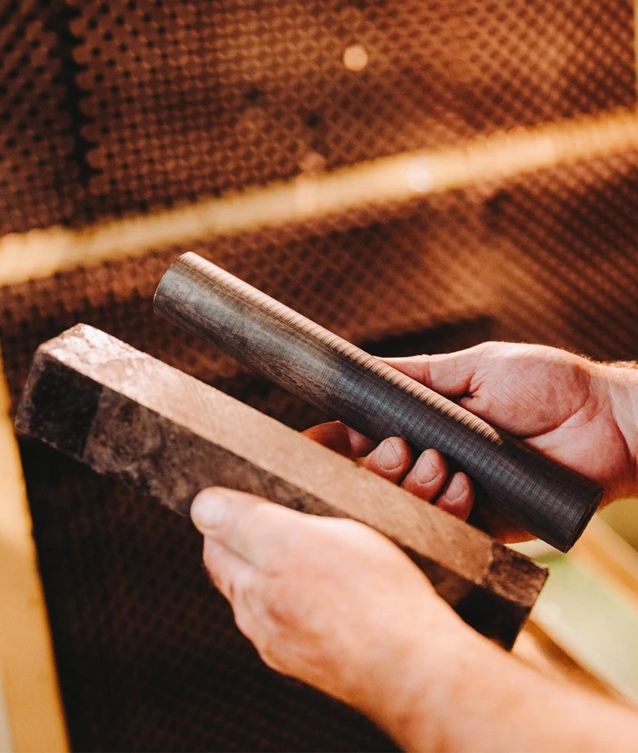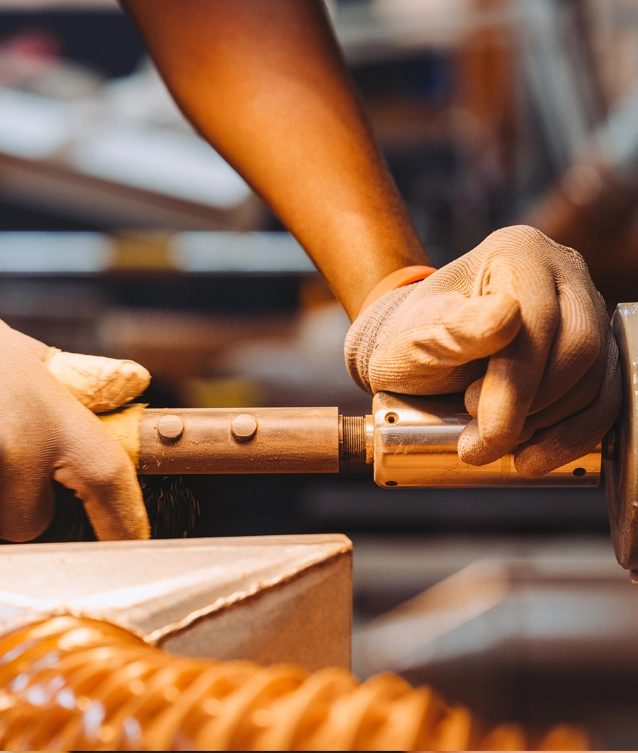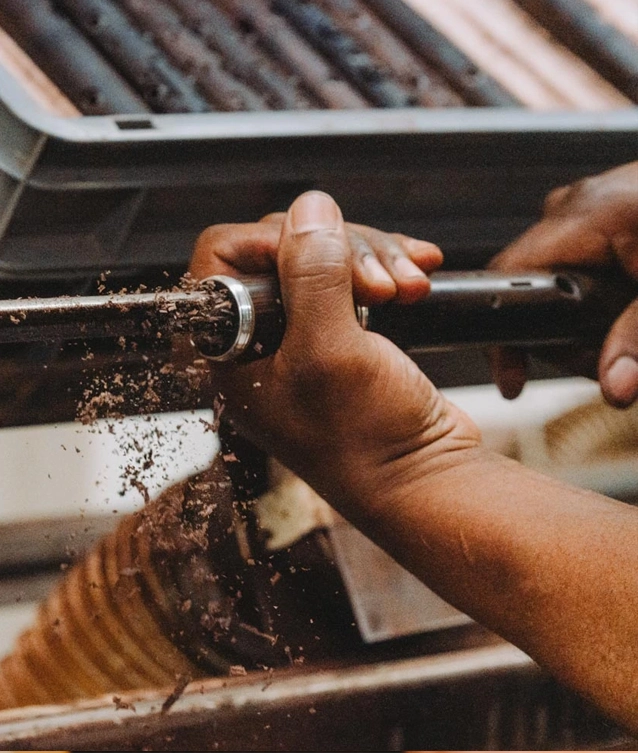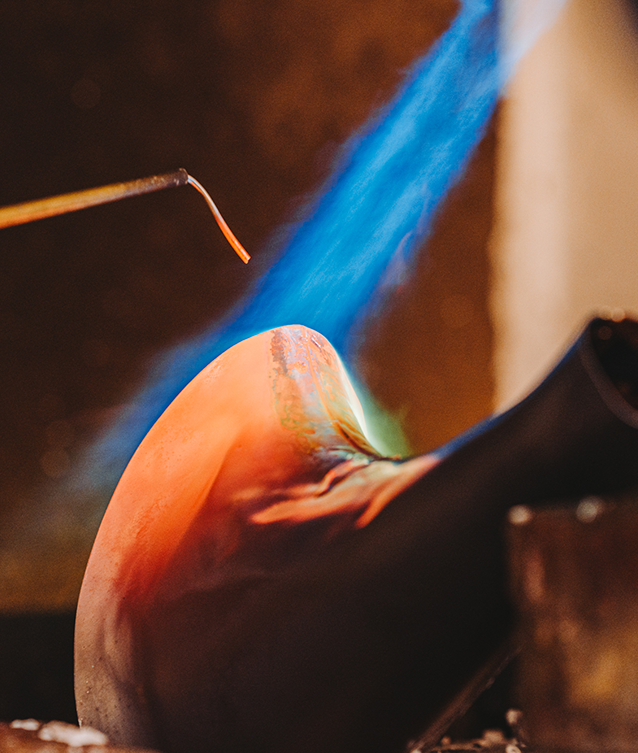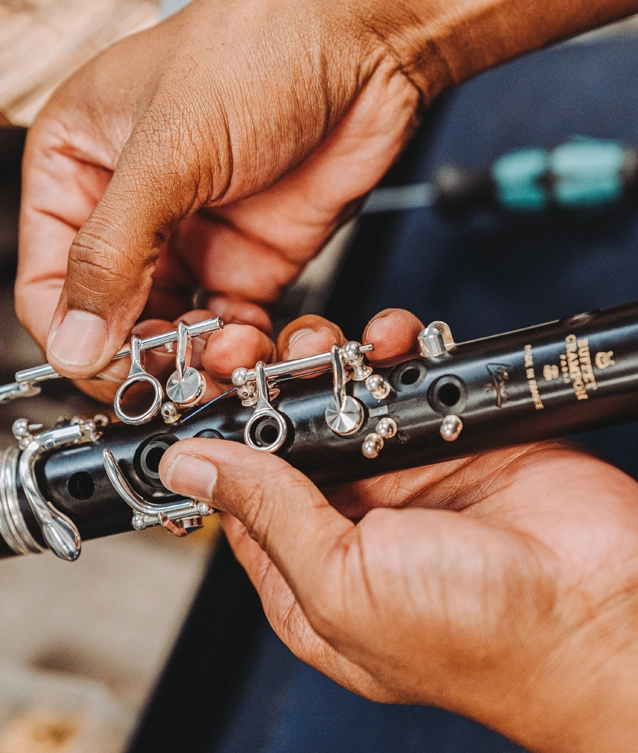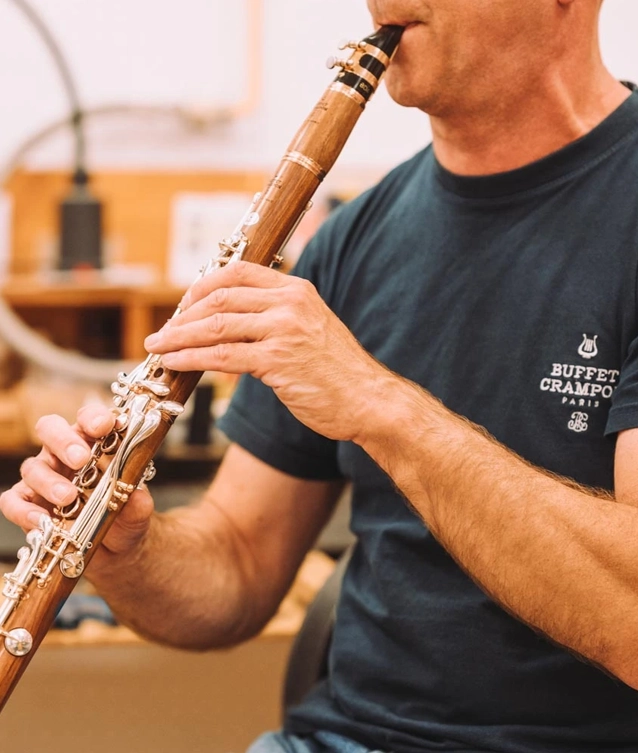Innovating and Creating
Benchmark Instruments
The manufacture of instruments is a masterful blend of almost two hundred years of expertise and cutting-edge technology. Each instrument moves through the expert hands of dozens of instrument makers, with skills handed down from generation to generation.
The first step begins with woodworking, specifically on wooden blocks that are turned and cut to the correct length. Next comes the sanding stage, followed by the drilling process.
After that, we start the metal part with post and pillar assemblage, keywork, welding... The final stage is finishing, which involves meticulous key adjustments and assembling the different parts of the instrument. The instruments are now ready to be tested, whether by in-house testers or renowned international artists.
Buffet Crampon enjoys the trust of the greatest soloists and orchestral sections worldwide, and conversely, we rely on their demands to develop new instruments with them.
This artistic excellence is a tremendous strength and immense pride. This essential connection between musicians and the work of our instrument makers allows us to be a reference in the world of music for clarinets, oboes, bassoons, and saxophones.

